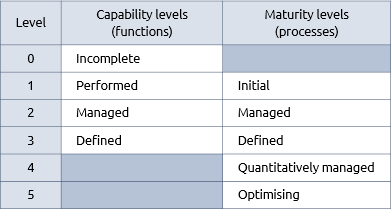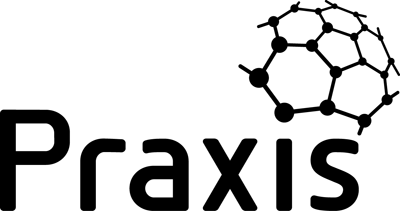General
Capability and maturity are usually represented as a model against which an organisation’s performance can be measured and improved. Usually referred to as capability maturity models, they describe the essential elements of effective processes and work on the premise that the quality of a system or product is highly influenced by the quality of the process used to develop it.
The goals of capability and maturity management are to:
- assess the ability of an organisation to perform P3 management effectively and efficiently;
- identify how the organisation can improve its P3 management;
- promote the improvement of P3 management against an independent standard.
The idea of a capability maturity model that describes of an organisation’s increasing effectiveness in sequential stages was popularised by the Software Engineering Institute (SEI) at Carnegie Mellon University in the USA.
Since the SEI Capability Maturity Model was first published in 1993, the concept has been replicated for many areas of business, including project, programme and portfolio management.
Praxis adapts and applies the principles of CMMI® to the functional and process elements of P3 management.
In the Praxis capability maturity model, knowledge functions are assessed on the capability scale and life cycle processes (which integrate the functions) are assessed on the maturity scale.
The current version of the SEI model is the CMMI® (Capability Maturity Model® Integration). This identifies two scales, one for capability and one for maturity. Capability addresses individual process areas whereas maturity addresses the overarching integrated processes.
The capability scale runs from level 0 to level 3:
-
Level 0 – Incomplete: the function is not performed or is partially performed. The goals of the function are not achieved.
-
Level 1 – Performed: the function is performed and the goals are achieved, but the procedures and application are inconsistent, and not embedded in the organisational culture.
-
Level 2 – Managed: the function is managed in accordance with policy. It is performed by competent people with adequate resources to produce controlled outputs. The function is monitored for adherence to its description.
-
Level 3 – Defined: the function is consistently managed using tailored versions of the organisation’s standard approach. Lessons are captured and contribute to organisational knowledge.
The maturity scale identifies the stages in an organisation’s development from its initial chaotic attempts to manage projects, programmes and portfolios, to a point where most initiatives succeed and the organisation has the ability to improve continuously.
-
Level 1 - Initial: processes are ad hoc and occasionally chaotic. The organisation does not provide a stable environment to support functional capability and success depends upon individual effort and heroics.
Maturity level 1 organisations often deliver the project, programme or portfolio objectives but frequently exceed budgets and schedules. They have a tendency to overcommit, abandon their processes in times of crisis and be unable to replicate their successes.
-
Level 2 - Managed: the relevant functions are managed to capability level 2. The overall life cycle based process ensures that functional procedures are maintained during times of stress and progress is visible to management at defined points.
-
Level 3 - Defined: the relevant functions are managed to capability level 3. Projects, programmes or portfolios tailor functional procedures and perform these within a centrally defined but tailored set of life cycle based processes. The organisation improves processes and procedures.
-
Level 4 – Quantitatively managed: performance metrics are gathered and used to control future performance. Quality and performance is understood in statistical terms.
-
Level 5 - Optimising: continuous process improvement is enabled by quantitative feedback from the process and from piloting innovative ideas and technologies.
The two scales overlap as shown below.

The aspiration of most organisations is to achieve maturity level 3 which represents the ‘effective organisation’. The return on investment for achieving level 3 is provided by a reduction in time and cost over-runs, greater predictability in the achievement of objectives and a more robust (and therefore less risky) delivery environment.
The Praxis approach to maturity is similar to the ISO9000 approach to quality, in that an organisation defines its own required scope of capability maturity against which it will benchmark and improve.
Levels 4 and 5 are concerned with becoming more efficient, i.e. the benefits of achieving level 3 are retained but less effort is expended in maintaining them.
Maturity is sensitive to the context of projects, programmes and portfolios. It should not be necessary to achieve capability or maturity in functions or processes that an organisation does not normally perform.
Any given level of maturity indicates the level of performance in those areas that are appropriate to the organisation’s context.
Projects, programmes and portfolios
Projects are the basic building blocks of both programmes and portfolios. It is highly unlikely that an organisation could start to develop a mature approach to delivering programmes without first establishing a consistent way of managing projects.
Ideally, programmes are initiated in an organisational environment where project management is already well established and consistent. However, it is not uncommon for an organisation to be managing projects in an inconsistent manner and then collect these together in a programme.
In this instance the programme management team has an opportunity to develop programme-wide governance mechanisms for the component projects (if this hasn’t already been done at portfolio level). In this way, programmes can not only deliver defined organisational change and benefits, but also act as a catalyst for improving the maturity of project management which in itself leads towards programme management maturity.
A contracting organisation’s portfolio is made up of projects and/or programmes performed on behalf of clients. This portfolio is driven by the ability to win contracts rather than the delivery of strategic internal change. This type of standard portfolio may only aspire to level 3 maturity.
In a standard portfolio the emphasis is on developing maturity of projects and programmes through standardised methods and functions. This is sometimes known as ‘management of projects’. This approach can achieve maturity level 3, i.e. the overall portfolio of projects and programmes is managed to achieve higher levels of project and programme management maturity.
Progression to level 5 maturity requires the application of a defined portfolio management process in addition to achieving corresponding levels of maturity for component projects and programmes.





